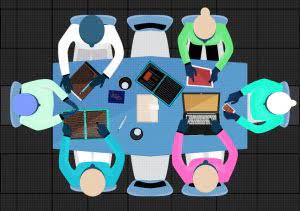As LA veers toward a financial crisis, $320M in liability payouts play a big role
Deciding on a Virtual Info Room
23 Ocak 2024Dating A Woman With Children: A How-To Self-help Guide To Do It Right
26 Ocak 2024
State and local governments may also impose a payroll tax to pay for municipal programs and projects. You should see a breakdown on your paystub of each payroll tax amount and the collector. At the beginning of each calendar year, you’ll receive a W-2 — or 1099, if you’re an independent contractor — from each employer you had, detailing how much you earned and how much was withheld for taxes.

Accounting Practice
For example, if you take a $10,000 loan with a 5% annual interest rate, each monthly payment will consist of a portion that goes toward the principal and a portion that covers the interest expense. When you borrow money, record the liability by recognizing the amount you owe. Start by entering the full loan amount as a liability on your balance sheet under Notes Payable or Long-Term Liabilities, depending on the loan’s term. In this article, we’ll explain the different types of liabilities, how they impact your business, and ways to manage them. As a small business owner, you’re going to incur different types of liabilities as you operate.
- Liabilities must arise from events that occurred in the past and are expected to be satisfied in the future.
- This process can be time-consuming, but with good payroll software you can automate these steps and make calculating your payroll tax liability as easy as clicking a button.
- If you’re worried about data breaches, you might invest in better security software, train your employees to spot phishing scams and create a plan for responding to a breach if it happens.
- This article outlines what you need to know to protect yourself and your business from unexpected risks.
- For example, buying new equipment may mean taking out a loan to finance the purchase.
- This can be invaluable if you must defend yourself against a claim.
- The following accounts of the city’s largest liability payments from fiscal year 2024 are based on court and federal documents.
What is a Liability?
They are short-term liabilities usually Insurance Accounting arisen out of business activities. Examples of current liabilities are trade creditors, bills payable, outstanding expenses, bank overdraft etc. Solvency is your ability to meet long-term obligations and remain financially stable over time. This is measured by comparing your total liabilities to your total assets. If liabilities are too high compared to assets, or are growing faster than your assets, your business may struggle with solvency and you might need to explore strategies to reduce debt or increase assets. Moreover, the government requires businesses to pay taxes as mandated by the law.
What Is Financial Ratio Analysis? A Small Business Guide

US GAAP requires some businesses to disclose or report contingent liabilities. Small businesses that aren’t required to comply with the US GAAP may opt not to consider contingencies in financial reporting. Liabilities exist because there are obligations between two parties. In this case, your business has an obligation to do something for or to give something to another person or entity.
Are liabilities an expense?
The amount owed to shareholders following the declaration of a dividend is recorded as a current liability under dividends payable. Like wages payable and interest payable, it is expected to be settled within one year. So, when it comes to reporting a company’s finances, only certain contingent liabilities need to be reported. For a bank, accounting liabilities include a savings account, current account, fixed deposit, recurring deposit, and any other kinds of deposit made by the customer. These accounts are like the money to be paid to the customer on the demand of the customer instantly or over a particular period. Some of the liabilities in accounting examples are accounts payable, Expenses payable, salaries payable, and interest payable.

Once more, we caught up with David to help us understand how business owners ensure that the dollars owed get from point A to point B. The Internal Revenue Service (IRS) offers guidelines and regulations on howto maintain proper payroll documentation. It calls for keeping payroll- or tax-related documents for three years or longer. Running a business can be challenging and some of the main issues are the amount of jargon you need to understand and administrative work that drains your productivity. Download our guide to learn how to effectively boost your productivity as a small business owner.
All information, including rates and fees, are accurate as of the date of publication and are updated as provided by our partners. Some of the offers on this page may not be available through our website. The Experian Smart Money™ Debit expenses vs liabilities Card is issued by Community Federal Savings Bank (CFSB), pursuant to a license from Mastercard International. Led by editor-in-chief, Kimberly Zhang, our editorial staff works hard to make each piece of content is to the highest standards. Our rigorous editorial process includes editing for accuracy, recency, and clarity.
- In totality, total liabilities are always equal to the total assets.
- In summary, a liability is a financial obligation or debt owed by a business or individual.
- It invoices the restaurant for the purchase to streamline the drop-off and make paying easier for the restaurant.
- Many businesses take out liability insurance in case a customer or employee sues them for negligence.
- It’s a scary thought, but having the right product liability insurance can provide a financial safety net.
If a company has an obligation to pay someone or for something, it’s a liability. Liabilities are best described as debts that don’t directly generate revenue, though they share a close relationship. The money borrowed and the interest payable on the loan are liabilities. If the business spends that money to acquire equipment, for example, the purchases are assets, even though you used the loan to purchase the assets. Assets have a market value that can increase and decrease but that value does not impact income statement the loan amount. An expense is the cost of operations that a company incurs to generate revenue.
Liquidity refers to your business’s ability to meet short-term obligations. If not well managed, high levels of current liabilities, like accounts payable or short-term loans, can strain your liquidity. Keep an eye on your cash flow to be sure you have enough liquid assets to cover these short-term debts. If your business regularly faces liquidity issues, consider adjusting payment terms with suppliers or seeking additional short-term financing. Examples of common liabilities include accounts payable, accrued expenses, wages payable, and short-term loans. Accounts payable refers to outstanding invoices owed to suppliers for goods or services received but not yet paid.

